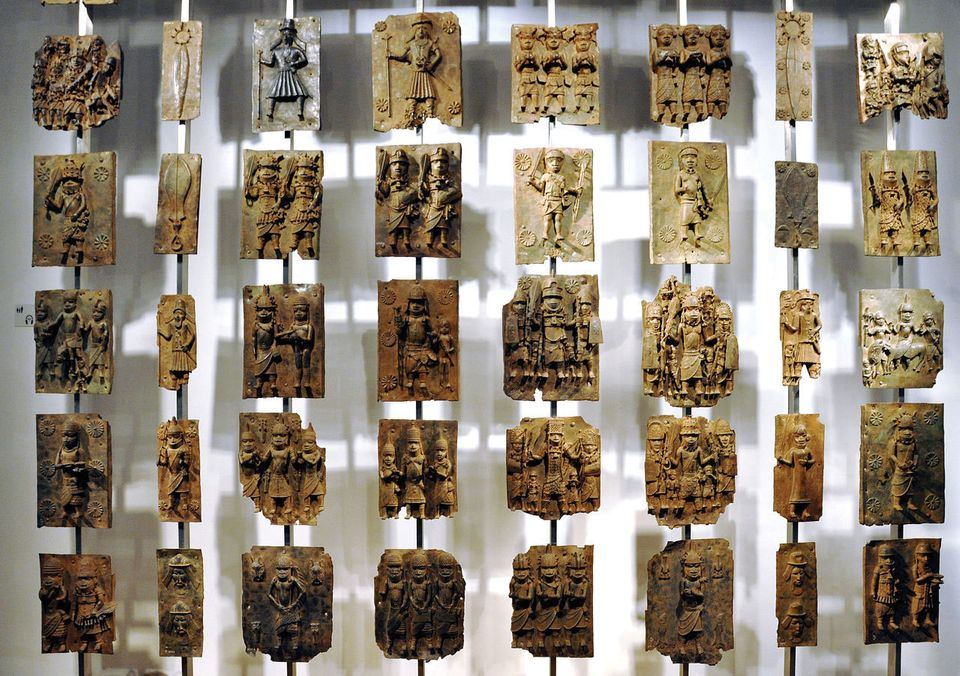One of my ambivalent pleasures is visiting museums in African countries. There is a sad side to it. Maintenance could often be better. The dust on floors and in showcases creates an atmosphere resonant with the streets outside. A visit is made even more enjoyable if a class of school children is also on tour. The collections seem hardly changed since independence. In national museums, you find amazing objects, but more striking is the absence of the truly great traditional art—the masterpieces that many of us have seen in Dutch museums, in the British Museum, or the Musée de quay Branly in Paris.
Last year in the Netherlands, the ethnographic museums drew up guidelines for the restitution of artifacts stolen during colonialism. A special commission was formed to evaluate possible claims. Is this really such good news for the countries in which the art was made?
The discussion has dragged on for many years. Shortly after taking office, French president Emmanuel Macron declared that restitution of stolen heritage-art was a top priority. In the United Kingdom, the debate has followed course. The British Museum is considering sending pieces from its vast collection to the countries of origin, on loan. In this way, Nigeria’s wish to show the famous Benin Bronzes to the Nigerian public in a new museum to open in Edo State in 2023 can be honoured. But to give it back? Let’s try a temporary loan of three years to begin with, the British suggested. Some Dutch museums also are exploring possibilities of temporary exhibitions in countries of the objects’ origin.
This approach is upside down, as if allowing one to borrow a stolen bicycle from a thief. Instead, western museums should pay lease-fees for ‘borrowing’ all the art they stole. Looked at in this way, Nigeria has involuntarily ‘loaned’ some of its treasures to European powers. As compensation, a way out of the seemingly endless argument is that European museums should be obliged to conclude contracts with governments in countries of origin about leasing the stolen art in their collections for an agreed price and time.
Yes, we are talking about substantial amounts of money here. Certainly, for countries rich in traditional art, like Nigeria and the Congo. The fact that European museums have kept artifacts from African countries without paying for a century or longer must be taken into account when the fee is decided. If museums don’t agree, or if no agreement about the price can be reached, the art must be immediately returned.
Settling restitution arguments in this way is much clearer than commissions and jurists studying and judging claims that are often difficult to document. Years of disputes lie ahead, without any change to a situation that all parties agree is unjust. If museums are made to pay for the African artifacts in their collections, they have good reasons to speed up the restitution process.
First, it must be stated that African art is the property of the governments in the countries where they were made. That these countries did not formally exist at the time that the art was stolen is an unjust argument, often used as a tactic of delay. With independence, all property of the former colonial state should have been returned to the governments of these new nations. Contemporary disputes about ownership of traditional art and artifacts within these countries is a matter of internal dispute. The bronzesmiths in the contemporary Nigerian region of Benin, for example, demand that the Benin Bronzes in the British Museum should be returned to their region, to be seen by the people whose culture the art represents. Specific questions of who owns the bronzes is a case for the Nigerian authorities or judiciary. It is a debate for Nigerians, not for the western countries who lay false claim to these objects.
Those with an interest in the rich art history produced by the varied cultures in Africa, have concerns that once returned the objects will not be properly conserved. There is, unfortunately, good reason for that concern, as is there for the concern that returned art might be stolen again and re-appear on the western art market or disappear due to corruption. Such fears, however, should not serve to legitimise the original crime — the theft as a result of colonialism. As recompense, an effective, temporary solution, is for western museums to pay a lease fee for the African art in their collections.
For many African countries, the income from leasing fees will be a welcome resource to update facilities and infrastructure of national museums. Conservation of artifacts, often made from cloth or wood, in tropical conditions requires special and often costly measures. The revenue from the lease-contracts would free African institutions from humiliating binary of ‘development-aid’ and charity. There are many African architects ready to build museums adapted to their environment and context. Need I mention the beautiful Smithsonian Museum of African American History and Culture in Washington, designed by the Ghanaian-British architect David Adjaye?
Wim Bossema is an editor and staff writer at De Volkskrant, a Dutch daily newspaper, in which this opinion piece first appeared.


